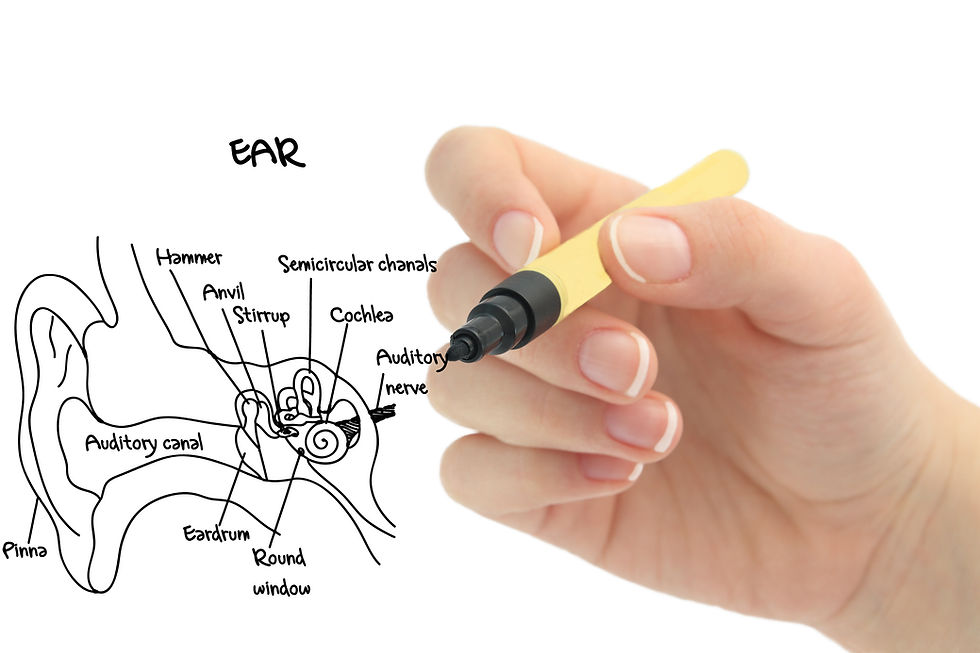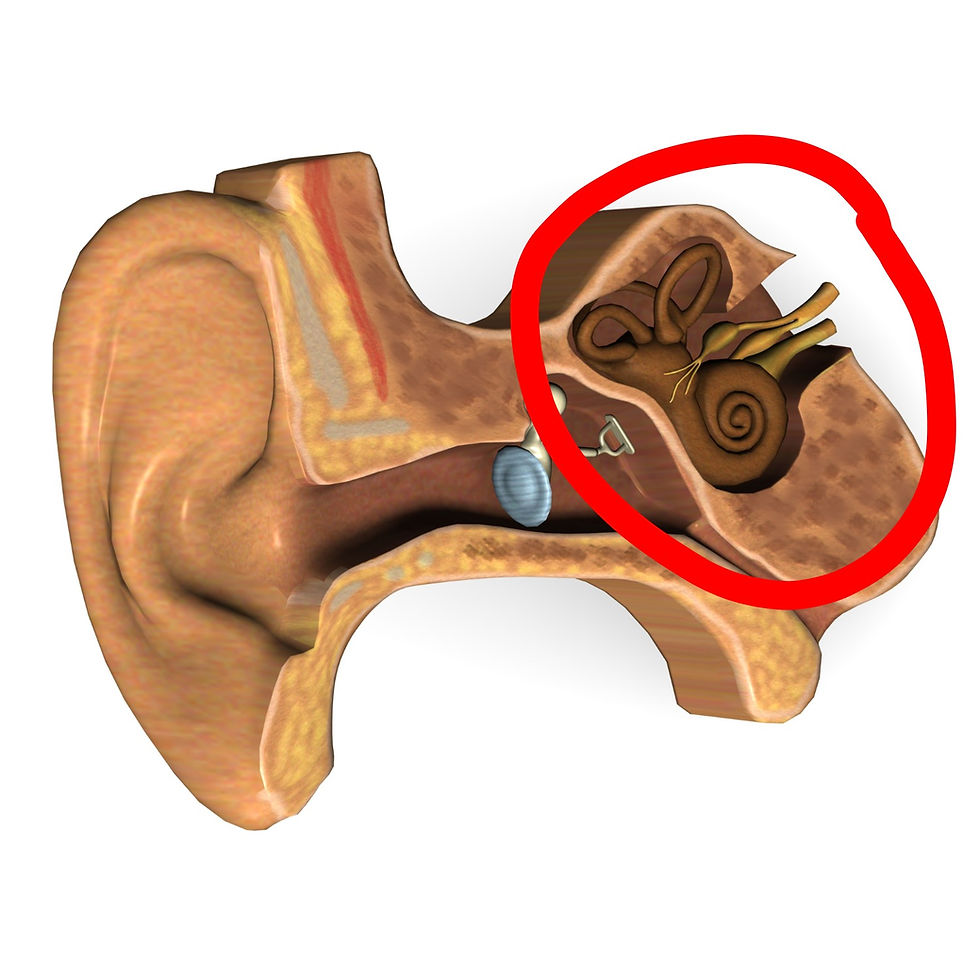The Inner Ear: Anatomy of the Vestibular System
- jasonadour
- Jul 14, 2018
- 2 min read

The Vestibular System, also known as the "Inner Ear" is an exotic, interesting and very important balance system. Understanding the anatomy of the vestibular system can help make sense of how to keep your inner ear working optimally.
You can find the Vestibular system in the picture below circled in red. You have two of these apparatus, one just inside your left ear and one just inside your right ear.

The function of the Vestibular system is to detect motion, equilibrium & spatial orientation and then send that information to the brain (brain stem) which in turn tells the muscles and eyes how to maintain balance and maintain clear vision while moving.
The physiology, or how the apparatus works, is a little tricky, but here are the basics. The utricle and saccule are highlighted in the picture below by the blue arrow. (This picture below is a zoomed in version of the above picture). They detect linear movement and gravity. So for example, when you are standing up out of a chair or walking forward, this section of the inner ear is sensing that.

If a physical therapist detects you have difficulty with balance during these activities involving linear movement, we can apply a specific set of exercises to help. For example, if some unsteadiness is noticed while standing up out of a chair we may have you complete sit to stand exercises with your eyes closed. With repetition, this section of your inner ear can learn how to better process the data from standing and therefore help you stand up with more stability.
Another section of the apparatus, is the semicircular canals. I've outlined them in yellow in the picture above. Their job is to detect movement of the head on the body. Here's how it works: You have a fluid called endolymph in the semicircular canals. You also have hair cells lining the canals which are sensing the movement of the fluid. When you turn your head to the right, the fluid in the ear lags behind due to inertia which exerts a pressure against the hair cells. This information is then sent to the brain about the movement which in turns makes decisions to help you stabilize your gaze (focus your eyes) and tells your body and muscles how to respond to that data.
If a physical therapist suspects the semicircular canals are not giving your brain the proper information, we may recommend completing head turning exercises. With repetitive turning of the head, the vestibular system can be re-calibrated to give the brain the appropriate information and therefore improve your balance.
Here's a quick exercise to see the vestibular system in action. Focus your eyes on the "X" below and gently turn your head left and right.

The endolymph is moving around in your semicircular canals in both your right and left vestibular systems. This data is then sent to your brain stem, which is giving orders to your eyes about how to keep the "X" in focus.
Incredible right!?!
If you are experiencing difficulty with your balance or dizziness, the vestibular system may be playing a role. Contact us at the Maine Strong Balance Center if you would like to learn more about how Vestibular Physical Therapy may be able to help you.





